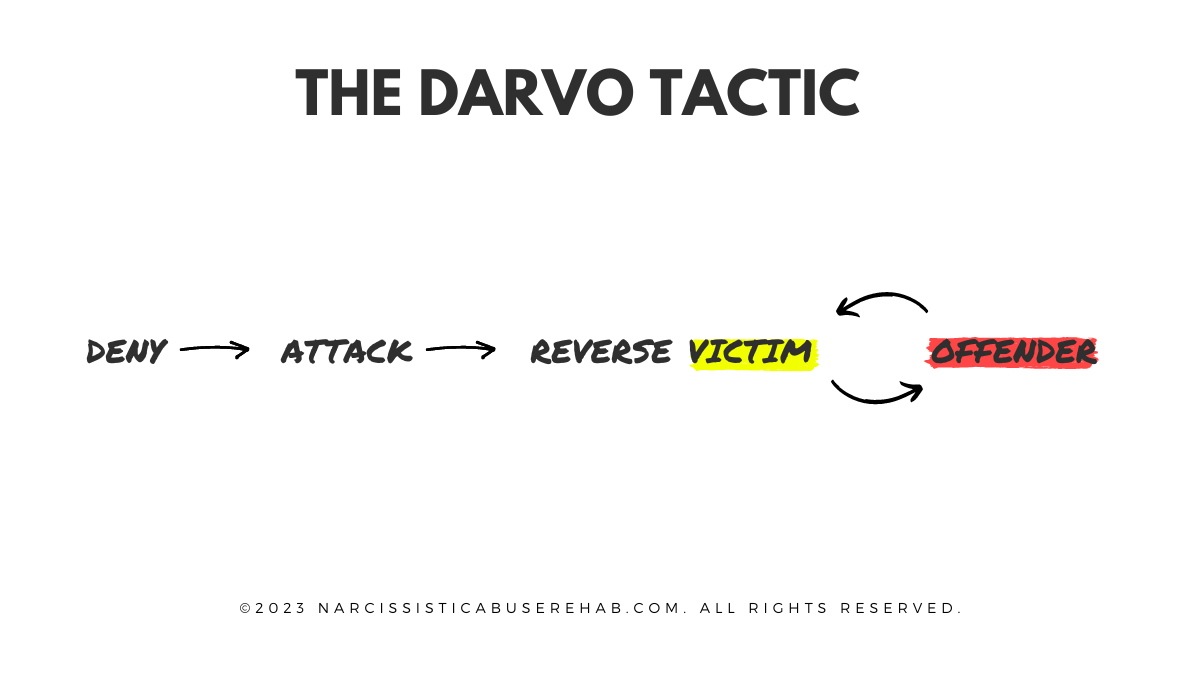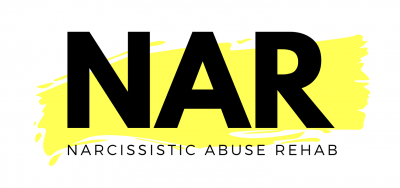Coercive control survivor Andrea Smith bravely shares experience of the dangerorous cycle of abuse and how she escaped
DARVO

DARVO illustrated by Manya Wakefield. ©2023, All rights reserved.
DARVO stands for Deny, Attack, Reverse, Victim, and Offender. It is an acronym for psychological manipulation tactic that was first coined by Jennifer J. Freyd, Ph.D. Dr. Freyd is a professor of psychology at the University of Oregon and the founder of the Center for Institutional Courage.
This section features articles and podcasts that discuss DARVO, a victim-blaming tactic manipulators use to avoid being held to account for their behavior. Here, readers will find a wealth of information, including a precise definition of the concept, how it is used and real world example of DARVO.
Examination of the psycho-social wounds caused by DARVO campaigns and their long-term consequences are also highlighted. As well as how bystanders are groomed into passive silence or active participation in the scapegoating process.
Sandra L. Brown analyzes how the rejected theory of Parental Alienation Syndrome because big business in the family court system.
Pulitzer Prize-winning journalist and divorce coach Amy Polacko joins us to unpack the alleged post-separation abuse of Catherine Kassenoff.
Understanding Narcissistic Abuse: Learn about the cycle, signs, and recovery from emotional manipulation and toxic dynamics.
Learn about DARVO in toxic relationships. Discover the signs of the deny, attack, reverse, victim, and offender manipulation tactic.
Statistics show that in every 1000 cases of sexual assault, only 25 perpetrators do jail time. Why is the criminal justice system failing vimctim-survivors?
DARVO (Deny, Attack, Reverse, Victim, and Offender) is a defense tactic commonly used in the context of extreme or malignant narcissism.
DARVO is an initialism that stands for Deny, Attack, Reverse, Victim, and Offender. It describes a defense tactic used avoid accountability.
FLYING MONKEYS ARE ENABLERS who act on behalf of narcissists. They are usually friends and relatives who serve as surrogates, emissaries, fixers and drones in the narcissist’s network. Moreover, they make it possible for narcissists to carry out their campaigns of abuse by proxy. A person may rationalize playing the flying monkey role for a variety of reasons. Here are…
DARVO is an acronym for Deny, Attack, Reverse, Victim, and Offender. It is a manipulation tactic used to avoid being held to account.










